Why We (Nerds) Love (and Hate) Red Oak Hardwood
Posted by Lance Atkins on January 25, 2011 2 Comments
We hand make all of our cases out of red oak hardwood. We like it. A lot. Sometimes we hate it like a teenage daughter too. We like to think we have chosen oak like a child carefully picks our their new puppy from the litter. Color, Attitude, Size, Love-ability...
Red oak is a really cool wood. The pores running through the grain of red oak are so open that we have used a stick as a water straw. You can suck liquids through it! (Okay, maybe not a fruit smoothie) Relive your childhood and blow bubbles with it:
Eco-friendly. A huge new trend in engineering and design is Life Cycle Analysis. It's a way of determining how "bad" something is for the earth/people/environment. It considers the production (wood, plastic, oil, unicorn horns), lifetime use (electricity, fuel), and disposal (recycle, trash). One of the scoring methods is the Eco-Indicator 99 method. Big number=bad. Small number=better.
Go download your free trial of Eco-It and try checking stuff you use. I've seen cars vs. airplanes, wood pencils vs. mechanical pencils. We did a quick comparison of wood vs. plastic... We start with 3lb of wood and end up with 1.5lb after woodworking. A speck plastic case is ~1.1lb of polycarbonate plastic. 3lb wood-against-1.1lb plastic:

Wood wins 91pts to 400 pts. Polycarbonate scores 4.39 times worse for mother-take-care-of-her-nature. That's what Nalgene water bottles are made of too. We also donate the waste wood: sawdust to horse ranchers, small pieces for firewood, and large pieces for other woodworking projects.
Red Oak is grown here in North America, so it doesn't have to travel far, just from somewhere east of the Mississippi River to Golden, Colorado. Exotic woods like Mahogany have to make a long, petroleum-fueled journey from another continent. Foreign exotic woods often are harvested less responsibly due to lack of regulation, too.
Wood is nature's perfect composite. It has fibers that make it directionally strong... Kind of like the graphite shaft on your buddies' golf clubs. Our wood MacBook cases are stiffer and lighter than if we made the identical thing out of plastic. Oak is also super awesome for these laptop cases because it's the right blend of weight and hardness. Light wood is way too soft (we hate scratches) and really hard/heavy woods are too brittle (cracks suck). Oak=Perfecto.
It's pretty dang light too. Our MacBook cases average 1.5 pounds (0.68kg). That's just what a beer in a glass bottle weighs. For comparison, a plastic Speck MacBook case weighs 1.1 pounds. Pretty darn close. Oak is getting cooler.
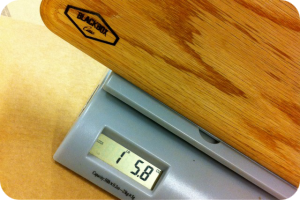
Oak makes us cuss sometimes, though. It especially presents challenges with applying finish. The first coat of finish typically pulls up fibers that had been pushed into its pores during finish sanding. So you sand again and again to get a smooth finish. The pores in the oak sometimes create "bleed-back." This happens when wet finish soaks into the deep pores, waits for the surface to dry, then pukes back onto the surface. More swearin....sanding.
Why not bamboo MacBook cases? Bamboo is actually a grass, which is cool. However, it grows and shrinks much, much more with changes in humidity. That means that moisture changes introduce tension and, perhaps, cracks. Dry climates (Colorado) are the worst. Go to your local Target, go find the bamboo cutting boards. I would bet that a few of them have cracks running through them. We don't want business-traveler-Joe to have his Laptop Case disintegrate.
Now go have Fun.
-Team BBX


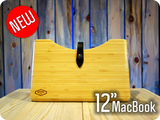
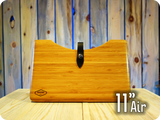
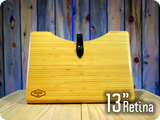
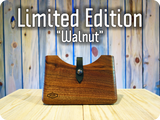






Bamboo is a grass, which means it is actually more environmentally friendly than red oak. Bamboo grows very quick, unlike the oak trees which take 30 years if not more to grow back to a decent size . Also if the bamboo is properly dried, it will not crack as much as you think. It will crack just the same way red oak will crack. There is no way to stop any wood from cracking a little bit, it is a moving organism. Wet or Dry, Warm or Cold, it will move. The reason why the bamboo cutting boards at Target crack, is because they are cheap and not properly dried, no one really cares that there cracked if there using it to cut on.
Posted by justin on January 30, 2011
I have been building with Red Oak since high-school. (read, long time). Most of my furniture is Red Oak all built by either my father or me, or a combination. I could not agree more. Love/hate relationship for sure when it comes time to finish. But I have been working with Danish Oil finishes for just as long and while it can suffer from fiber rise just like the oils you are using I simply love the simplicity of Danish Oil and how resilient it is to all kinds of stuff. I can sand, buff and re-apply over a blemish without too much trouble. The wood takes on a special character that just can’t be beat.
Love it, hate it. Mostly love.
Posted by Eric on January 25, 2011